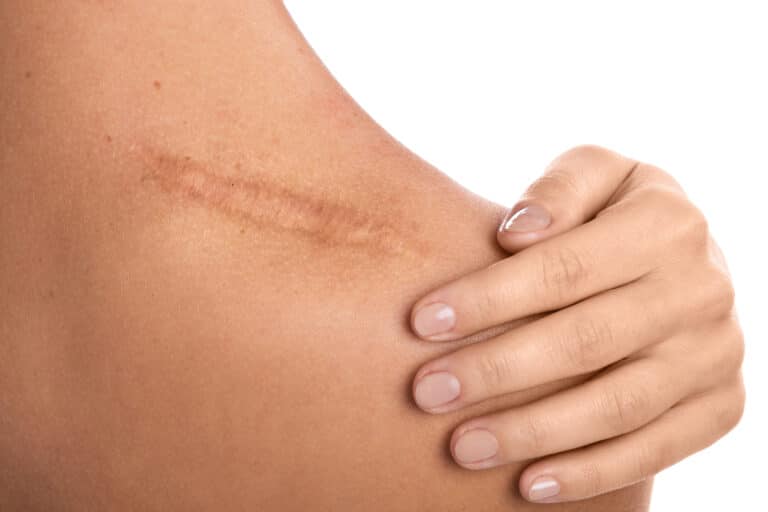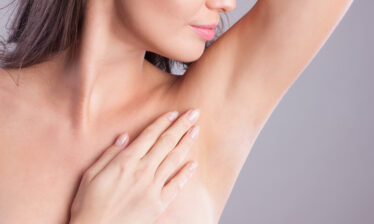Scars are the skin’s natural result of wound healing.1 However, poor healing during the main phases may lead to more dramatic scars. Scar revision treatments can help improve scar appearance, and understanding your options can help you decide how to get rid of scars safely.2
What Are Scar Revision Treatments?
Scars are unpredictable and can develop into large, raised, indented, textured, dark, or light marks that may cause pain or affect your appearance or skin movement.3 Scar revision treatments minimize scar texture and tone, helping it blend into your skin and improve movement.5
How Do Scar Revision Treatments Work?
There are different types of scar reduction treatments, each with a different effect. Topical therapies, for example, may block tyrosinase enzymes responsible for darkened skin or influence collagen and elastin production.6
Surgical therapies remove parts of scars, while laser therapies cause tiny injuries that prompt skin remodeling.7 Medication injections or radiation therapy may damage cells and prevent scar formation if performed within a few days of surgery or injury.8
Types of Scar Revision Treatments
The best types of scar treatment depend on the scar and when you have the revision therapy. Your doctor will help you choose the best option among many.
Dermabrasion
Dermabrasion is a skin resurfacing technique where your doctor uses a device to remove the outer layer of your skin.9 It’s sometimes called skin planing or “sanding” your skin.10 Dermabrasion causes microinjury to your skin and encourages new skin cells to grow, leading to a smoother appearance.11 It’s best for atrophic or depressed scars and pigmentation.12
Chemical Peels
Chemical peels are another resurfacing procedure. Your doctor applies a chemical solution, such as glycolic or trichloroacetic acid, to your skin to help remove the outer layer.13 Some solutions work on deeper layers to produce more dramatic results.14 These are often best for atrophic scars and pigmentation issues.15
Laser
Laser therapies include ablative, nonablative, fractionated, and unfractionated options.16 Ablative therapies, such as the CO2 laser, produce significant changes but have a long healing and recovery time.17 These therapies remove the outer layer and heat the middle layer of the skin to stimulate collagen.18
Nonablative therapies, such as pulsed dye laser, are less invasive and leave the skin’s surface intact.19 Recovery is shorter, and results are gradual.20 These are better suited for pigmented or hypopigmented scars and those with dark skin.21
Surgery
Surgical techniques help remove deformity, high skin tension, misaligned skin edges, or skin contractures. Common techniques include:22
- A W-shaped flap called a W-plasty
- A Z-shaped flap called a Z-plasty
- Geometric broken line closure
Next Steps
Not all scars need revision. If your scars bother you or cause problems with movement and pain, talk to your doctor about the best treatment for you. Explore My Skin Treatment to learn more about skin health and treatment.
SOURCES:
- Stat Pearls: “Scar Revision.”
- American Society of Plastic Surgeons: “Scar Revision.”
- American Society of Plastic Surgeons: “Scar Revision.”
- American Society of Plastic Surgeons: “Scar Revision.”
- Seminars in Plastic Surgery: “Scar Revisions.”






